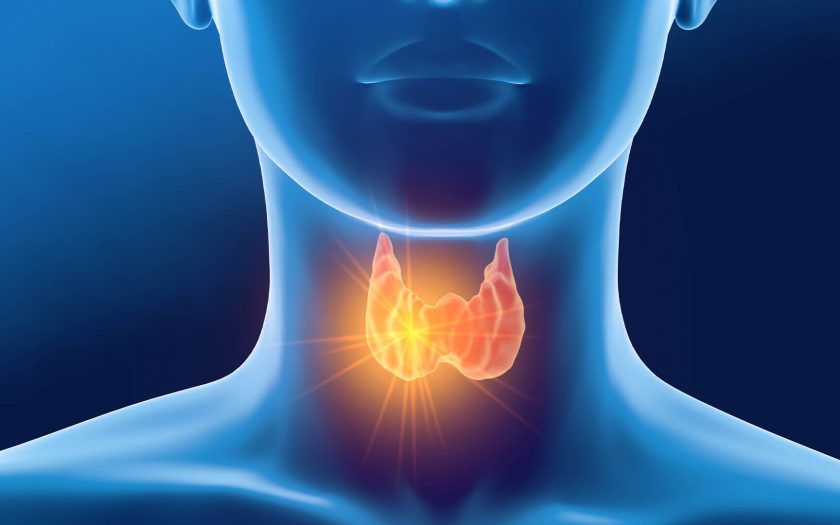Hyperthyroidism is a pathological condition manifested by hyperfunction of thyroid hormones. An excess of thyroid hormones leads to the development of toxicity and damage to various organs and systems.
The main signs of hyperthyroidism are:
- irritability;
- heart failure, tachycardia;
- persistent sweating;
- fever, feeling hot;
- thirst;
- lose weight;
- trembling hands and whole body;
- memory and attention disorders.
In this disease, exercises should include:
- general dynamic exercises for all muscle groups;
- relaxation exercises;
- breathing exercises;
- exercises for coordination and balance.
Exercises are recommended to perform from different starting positions.
With hyperthyroidism are also useful hiking, swimming, skiing. All exercises should be alternated with muscle relaxation and calming of breathing. The intensity of exercise should be determined by a physician, taking into account the degree of disorders of the cardiovascular and nervous systems. During exercise, avoid tilts, weights exercises, and sudden changes in body position. After sports, you should have only positive emotions and energy.
Let’s consider 12 basic exercises useful at this illness.
-
Exercise on a chair.
Sitting on a chair, perform flexion – extension, circular movements in the ankle joints. Perform the exercise at a slow pace, no more than 20 times.
-
Circular movements with both legs and arms, 15-20 times.
-
Circular movements of the elbow joints, 15-20 times.
-
Slow movements of the shoulder joints in one direction and in the other, 15-20 times.
-
Sitting on the floor, perform alternate straightening and bending of the legs, without lifting the heel off the floor, 10-15 times.
-
Tilts to the side.
Perform slow tilts to the side. Put your hands on your waist and repeat the inclines 5-6 times in each direction.
-
Turns.
Put your hands on your waist and turn your torso. Repeat 5-6 times.
-
Swimming movements.
Perform swimming movements with your hands 20-40 times.
-
Shoulder movements.
Perform free movements in the shoulder joints back and forth. Relax your arms and shoulder girdle and breathe calmly.
-
“Rowing”.
Imagine you are holding an oar in your hand. Follow the movements as if you were rowing.
-
Normal walking.
Walk at a leisurely pace. Raise your arms up, inhale, then lower your arms down and exhale.
-
Diaphragmatic breathing.
Sit comfortably or take any comfortable position in a place convenient for you. Breathe slowly and rhythmically through the nose, using the lower chest. This will help you use your diaphragm to breathe. When you inhale, the diaphragm lowers, the body relaxes, and the lungs are almost completely filled with air.
Contraindications to such exercises are:
- mental disorders
- serious disorders of the cardiovascular system
- severe pain
- severe leukocytosis
- anemia
If you have no contraindications, start exercising today! Effective treatment (for example, drugs such as Neo-Mercazole or Methimez) in combination with regular exercise will significantly improve your condition.

